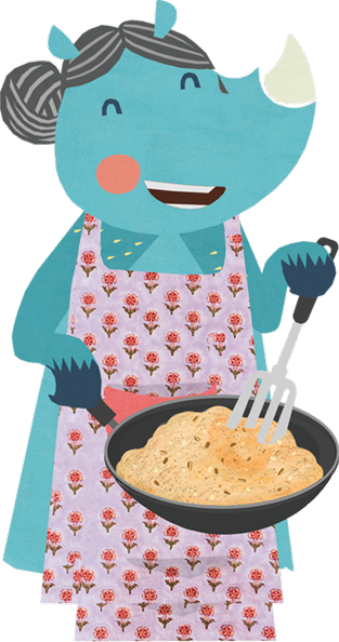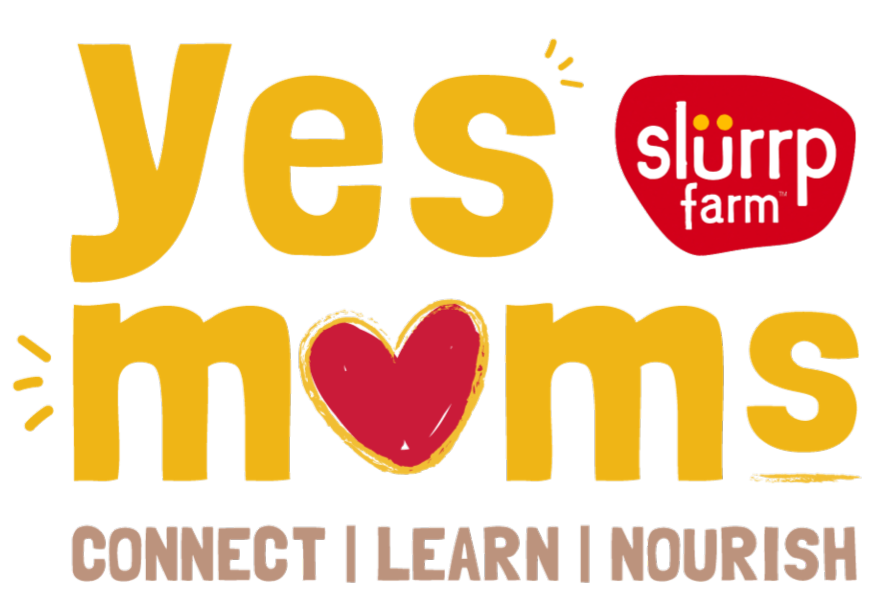
One of the many questions that comes to a parent’s mind is with regard to the introduction of sugar and sugary food in your baby's diet. Today, we'll explore the recommendations and considerations for sugar intake in 1-year-old babies.
Babies can have small amounts of sugar in moderation after they turn 1, but we do advise waiting until they turn 2 before introducing sugar or sweeteners like honey, maple syrup, or jaggery. We will discuss the “why’s” in a later section. Simply put, excessive consumption of sugar-rich foods can affect a child's eating habits and their ability to enjoy a variety of nutrient-rich foods.
That being said, sugar and sugar-rich foods play a delightful role in our Indian culture and cuisine! Festivals, ceremonies, weddings, and pujas often have special occasion-specific sweet treats, which are an integral part of the celebration. Occasional exposure to sugar during these special occasions is perfectly fine for toddlers under 2. But for day-to-day nutrition, it's best to limit sugary foods.
Now we move onto the reasons for avoiding sugar in children under 2, understand the difference between natural sugars and added sugars, and see how to strike a healthy balance in your toddler's diet.
Why Do Babies Prefer Sweet Foods?
Babies have a natural preference for sweet flavors, and this preference starts from birth. Sweetness is familiar to them, beginning with the amniotic fluid they get in the womb and continuing with breast or formula milk, which contains lactose, a type of sugar. It's only natural for babies to be drawn to sweet-tasting foods!
But, let’s be cautious about giving them too much sugar before the age of 2.
Why Avoid Sugar or Sugary Foods for Babies Under 2?
1) Critical stage for growth and development: Babies undergo crucial growth and development during the first 2 years of life. This period is vital for brain development, physical growth, and immunity building. Providing a nourishing diet rich in essential nutrients is essential for their bodies and minds to develop in a healthy way.
When babies consume sugary, nutritionally poor foods, it fills their tiny tummies, leaving less space for nutrient-rich options. This displacement of nutrition by sugary foods increases the risk of nutritional deficiencies. Since babies eat only a few bites at each meal or snack, we should ensure that those bites are packed with nutrients.

2) Establishing taste preferences: Babies are already inclined towards sweet flavors, and exposing them to excessive sugary foods can reinforce this preference. Studies show that the flavors babies are exposed to in their early years tend to influence their long-term food preferences. So, offer them ample opportunities to develop a liking for vegetables, fruits, grains, which are not as palatable as cookies or candy. Introducing a variety of flavors is also key so they can start appreciating diverse tastes.
3) Health risks in teenage and adult life: High sugar intake in toddlers under 2 is associated with an increased risk of future health issues, including Type 2 diabetes, heart disease, high cholesterol, high blood pressure, tooth decay, and obesity.
Natural Sugars vs. Added Sugars
Natural sugars are present in foods like fruits, vegetables, cereals, and milk. For instance, milk contains lactose, and fruits contain fructose. While fructose is a type of sugar, whole fruits are rich in essential minerals and vitamins, making them a nutritional powerhouse. The nutrients babies derive from foods with naturally occurring sugars surpass those found in processed foods with added sugars.
Added sugars are added to drinks and processed foods during their production. These sugars may lack the accompanying nutrients found in natural sugars.
The takeaway? Natural sugars found in whole foods are suitable for toddlers, while added sugars should be limited as much as possible.
Types of Added Sugars in Packaged Products
Next time you read a nutritional label, watch out for these names of added sugars:

- Brown sugar
- Caramel
- Corn syrup

-
High fructose corn syrup
-
Fruit juice concentrate
-
Fructose
-
Dextrose
-
Maple syrup
-
Honey
-
Molasses
-
Powdered sugar
-
Simple syrup
-
White sugar
Hidden Sugars: What Are They?

Some foods contain hidden sugars that may not taste very sweet. These include flavored yogurt or curd, flavored breakfast cereals, and dried fruits or nuts coated with sugars or honey. Reading nutrition labels can help you identify hidden sugars.
Encouraging Healthy Eating Habits in Your Toddler
1) Balancing sugar-rich and nutrient-rich foods: Sometimes, toddlers under 2 may not even come in contact with sugary foods, and that's good. But in most cases, babies may encounter sugary foods due to external influences like older siblings or daycare. As a parent, it’s your role to ensure they also consume nutritious foods alongside sugary treats.
Strive for a balance where 90% of your baby's diet consists of nourishing grains, cereals, vegetables, fruits, and dairy, while the remaining 10% allows room for desserts and sweet treats. When serving sugary foods, control the portion size and pair them with nutrient-rich options to avoid fixation on the sugary indulgence.

2) Avoid using sugary foods as rewards: Avoid using sweet treats as rewards for good behavior or meal completion, as this can make these foods more desirable and tempting!
3) Offer non-sweetened beverages: Instead of fruit juices or sugary drinks, give your baby water or milk as beverage choices.
4) Model good eating behaviors: Your baby is closely observing and learning from you, so take advantage of this by demonstrating healthy eating behaviors. When your baby sees you and other adults in the family enjoying vegetables, fruits, and nutritious snacks while choosing them over sugary alternatives, they're likely to follow suit.
Express your delight when consuming these healthy foods. By associating enthusiasm with nutritious options, you encourage your baby to develop a similar appreciation for healthy eating habits
5) Coordinate with other caregivers: If you have other caregivers involved in your child's care, like grandparents or daycare providers, discuss the importance of limiting sugary foods and come up with alternative rewards or treats. It’s normal for grandparents to be over-indulgent with their grandbaby. They may even find it hard to say no to them. So together come up with alternatives that grandparents can give babies in place of sweets. For example, a sticker can be given as a reward or treat in place of something sweet.
Remember, it's perfectly fine if your baby occasionally enjoys small amounts of sugar, especially during special occasions like their first birthday. These moments create cherished memories and are exceptions rather than the rule. Your child's overall well-being is what truly matters, and your thoughtful guidance will help them grow up with healthy eating habits. Enjoy this precious time with your little one, and may your parenting journey be filled with joy and love.


















